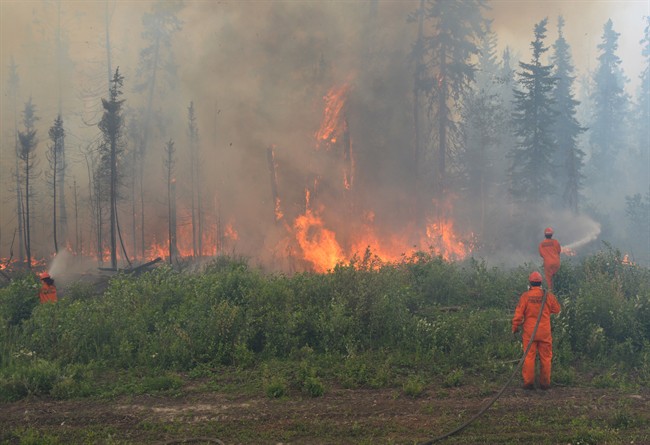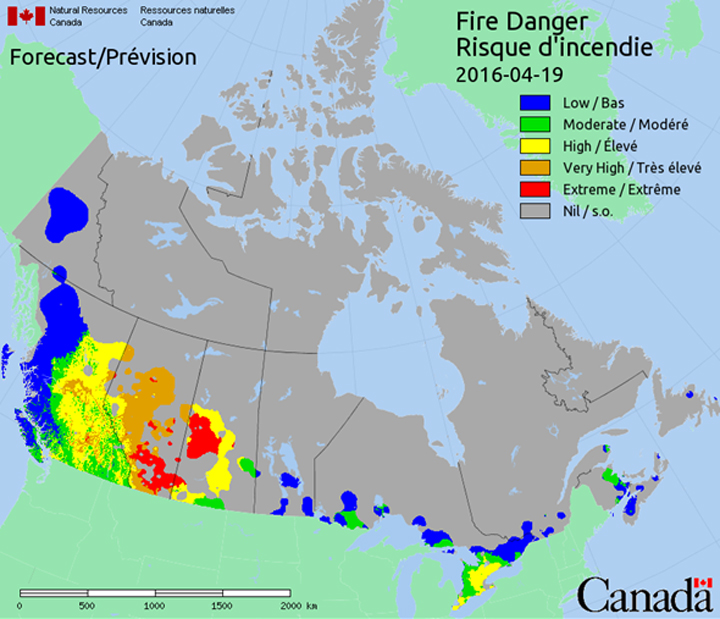REGINA – With extra firefighting crews and gear, the Saskatchewan government considers itself well-equipped to deal with this year’s wildfire season.

Firefighting crews were recalled two weeks ago for initial spring training and to respond to potential fires along the province’s forest border.
Steve Roberts, executive director of Ministry of Environment’s Wildfire Management Branch, said the province will also manage the early-spring wildfires with two CV-580 air tankers.
More crews from northern locations will be brought in later in the season.
“That will put us in better response capacity to get to the fires early and get them out quickly before they become larger,” Roberts said.
By bringing in an air tanker group at the end of March, which is two weeks earlier than last year, and firefighting crews a week after that, Roberts said the provincial government considers itself better prepared and farther ahead than last year.
“After last year’s fire season and fire review, we’ve also secured some more equipment, radios, pumps and hoses, so we’ll have that in stockpile in a warehouse for use if we need it,” Roberts said.
In total, there are four more four-person government crews that will help fight the wildfires.
There are also four more five-person contract crews from the Prince Albert Grand Council, the Meadow Lake Tribal Council and other northern communities.
As of April 19, there are 20 wildfires to date with seven currently burning in the province. Six of those fires are located in the Buffalo Narrows Forest Protection Area (FPA) and are contained.
“Temperatures are in the 20s and so are the winds, so what that results in is if we do have any fires, we’ll see quick-moving, grass-type fires,” Roberts said.
At this time last year, there were 25 wildfires. As the season progressed in 2015, the province saw 720 fires that burned 17,000 square kilometres of forest and forced about 13,000 people from their homes.
READ MORE: Saskatchewan readies for early wildfire season after historic blazes last year
The government’s wildfire response cost about $100 million.
Roberts said the province is currently considered to be in “spring fire conditions,” which means there is dry grass and other small debris can be a risk around the province.
“The forest areas are still wet and in many cases snow-covered, so what we’re seeing for fire behaviour is we’re seeing grass fires along the forest fringe and in the grass on parts of the province right now,” Roberts said.
According to Environment Canada and Natural Resources Canada, parts of the province are under an extreme fire risk due to record-breaking heat.
The fire danger comes from a dry winter and above-seasonal temperatures across the Prairie provinces.
READ MORE: Parts of Saskatchewan under extreme fire risk
The parts of Saskatchewan that are considered an “extreme” risk are Rosthern in the southeast, then stretching toward Unity, Meadow Lake and Battleford.
Regina, Moose Jaw, Watrous, Big River and Prince Albert are in the high-danger zone.
“Our conditions are actually not greatly different than they were last spring,” Roberts said.
“Snow pack in the early part of the winter was below average, but in the last month or so, it’s been average or better. So we are slightly drier than we were last year but not excessively so.”
After the snow melts, Roberts said the number of wildfires will depend on rainfall.
Roberts added it’s important for residents to be careful as most fires at this time of year are caused by people.
“Many of them from roadside, people burning ditches, doing a little yard-burning and not being extremely careful with fires,’ Roberts said.
Saskatchewan residents must receive a burn notification, or permit, from April 1 to Oct. 31 before lighting an open fire in a provincial forest, park land or within 4.5 km of a provincial forest.
Rural municipalities may also require a fire permit.





Comments